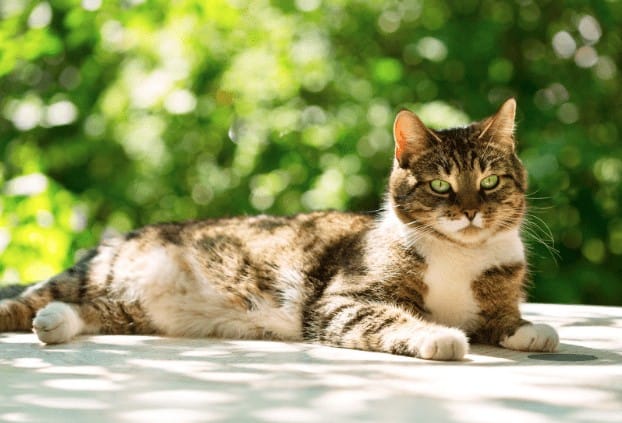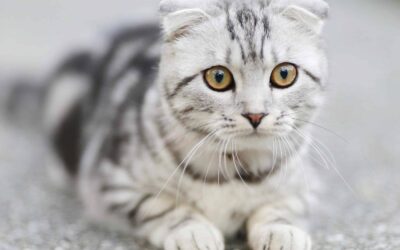Things to Know About Cat Down Syndrome

Updated October 25, 2025
\While Down Syndrome is not something that is biologically possible in cats, there are a variety of similar symptoms you may notice in your furry friend. Specific genetic mutations and viruses could contribute to the behavioral or physical abnormalities you are seeing in your pet. Below, we will explore what these symptoms are, what could be the cause, and how you can potentially treat them.
What is Down Syndrome?
Down Syndrome is a condition in humans characterized by an extra chromosome, an exact copy of chromosome #21, which can impact a person both mentally and physically. While the manifestations of this condition differ from person to person, there are some common symptoms that can help diagnose it. However, this is not the case for cats, as they only have 19 chromosomes, so they cannot receive a duplicate #21 as humans can.
Symptoms of Cat Down Syndrome
Despite the genetic impossibility for cats to develop Down Syndrome, there are still some abnormal traits and behaviors that you may notice in your pet that might raise some concerns. Symptoms can include wide-set or misaligned eyes, poor vision, a clumsy walk, a flat nose, poor muscle tone, and other motor dysfunctions or ailments.
Potential Causes
A variety of ailments can cause Down Syndrome-like symptoms in cats, and it’s usually indicative that something occurred in utero to inhibit the normal development of the kitten. Between infections, mutations, birth defects, malnourishment, and the mother’s exposure to toxins while pregnant, several contributing factors could have caused these symptoms in your cat. Specific diseases or illnesses like panleukopenia virus, cerebellar hypoplasia, and feline dysautonomia can cause severe damage to the cerebellum and thus negatively impact their development.
Regardless of the possible illness or ailment that your feline friend could have had, you should visit a veterinarian to get an exact diagnosis if you notice one or more of the symptoms listed above. They can help you discover possible treatments or cures for the illness, especially if your pet is still a kitten with further development ahead of them. After that, you can focus on being a loving and caring cat parent with less anxiety and worry about the mystery ailment your cat is dealing with.
Here is a simple guide to help you determine how often you should bring your cat to the vet.
FAQs
Can cats have Down syndrome?
No, it’s biologically impossible. Down syndrome (Trisomy 21) occurs in humans with an extra chromosome 21. Cats only have 19 chromosome pairs (38 total) vs. humans’ 23 pairs (46 total). Since cats don’t have chromosome 21, they can’t have an extra copy. Dogs also cannot have Down syndrome. “Feline Down syndrome” is not a real medical term—it’s a misconception spread through social media.
What causes Down syndrome-like symptoms in cats?
Various conditions cause similar symptoms: genetic mutations, congenital defects, infections during pregnancy (feline panleukopenia), toxin exposure in utero, neurological disorders (cerebellar hypoplasia/”wobbly cat syndrome”), birth defects, malnutrition during development, trauma, and feline dysautonomia. Cats can have extra chromosomes (like Klinefelter syndrome causing male calico/tortoiseshell patterns), but this isn’t Down syndrome.
What physical and behavioral traits resemble Down syndrome?
Physical: Wide-set eyes, flattened/broad nose, small/unusual ears, shortened facial structure, poor muscle tone, clumsy/uncoordinated movements, developmental delays, enlarged/misshapen head. Some traits are breed-specific (Persians have naturally flattened faces). Behavioral: Lack of coordination, difficulty learning, unusual social behaviors, repetitive movements, reduced responsiveness, excessive vocalization, confusion, difficulty navigating, slower development. These indicate specific conditions—not Down syndrome.
What is cerebellar hypoplasia and how is it treated?
Cerebellar hypoplasia is underdeveloped cerebellum causing “wobbly cat syndrome.” Often caused by feline panleukopenia virus in utero. Symptoms: wobbly/uncoordinated movements, difficulty walking/jumping/balancing, mild head tremors, poor motor control. Cannot be cured but manageable. Care: keep indoors, don’t declaw, provide rugs for traction, use baby gates for stairs, raise food/water dishes, low-sided litter boxes, create padded safe areas.
When should I see a vet and how are these conditions diagnosed?
See vet for unusual facial features, coordination problems, behavioral differences from littermates, developmental delays, vision/hearing problems, tremors/head tilts, difficulty eating/drinking, or repetitive movements. Diagnosis includes physical exam, medical history, X-rays/imaging, genetic testing, neurological evaluation, blood work, and possibly CT/MRI. Most conditions can’t be cured but are manageable for good quality of life.
Can special needs cats live happy lives and does insurance cover them?
Yes! With proper care, environmental adaptations, and love, special needs cats live happy, fulfilling lives. They need more frequent vet visits for monitoring. Consider adoption if you can provide time, financial resources, modifications, patience, and long-term commitment. Pet insurance coverage varies—most cover illnesses/injuries but may not cover pre-existing or congenital conditions present before coverage. Review Odie Pet Insurance policy details carefully for your cat’s specific needs.
–
Bailey Schramm is a writer in partnership with leading stethoscope distributor, Stethoscope.com



